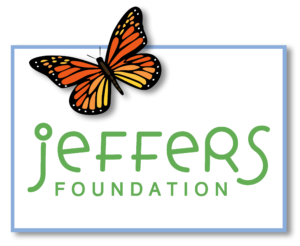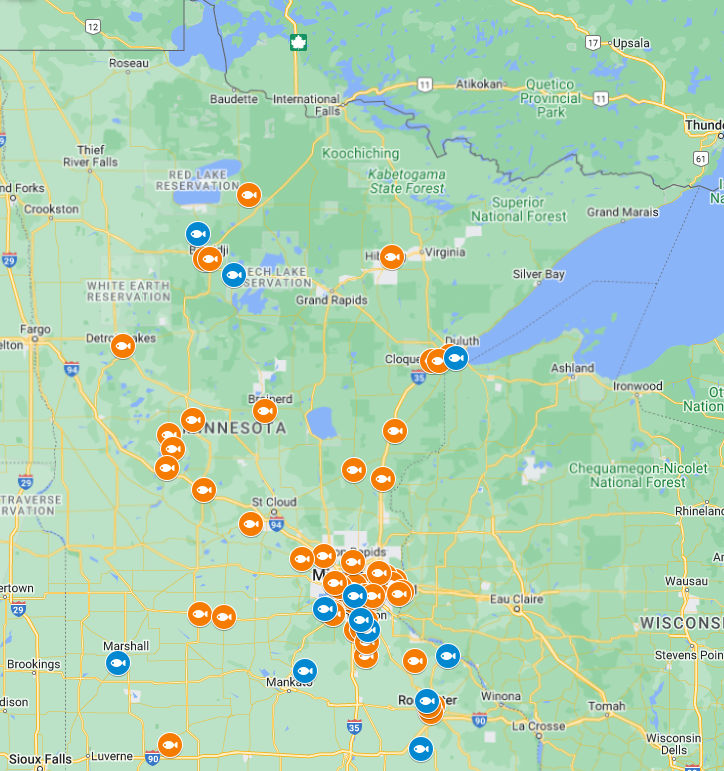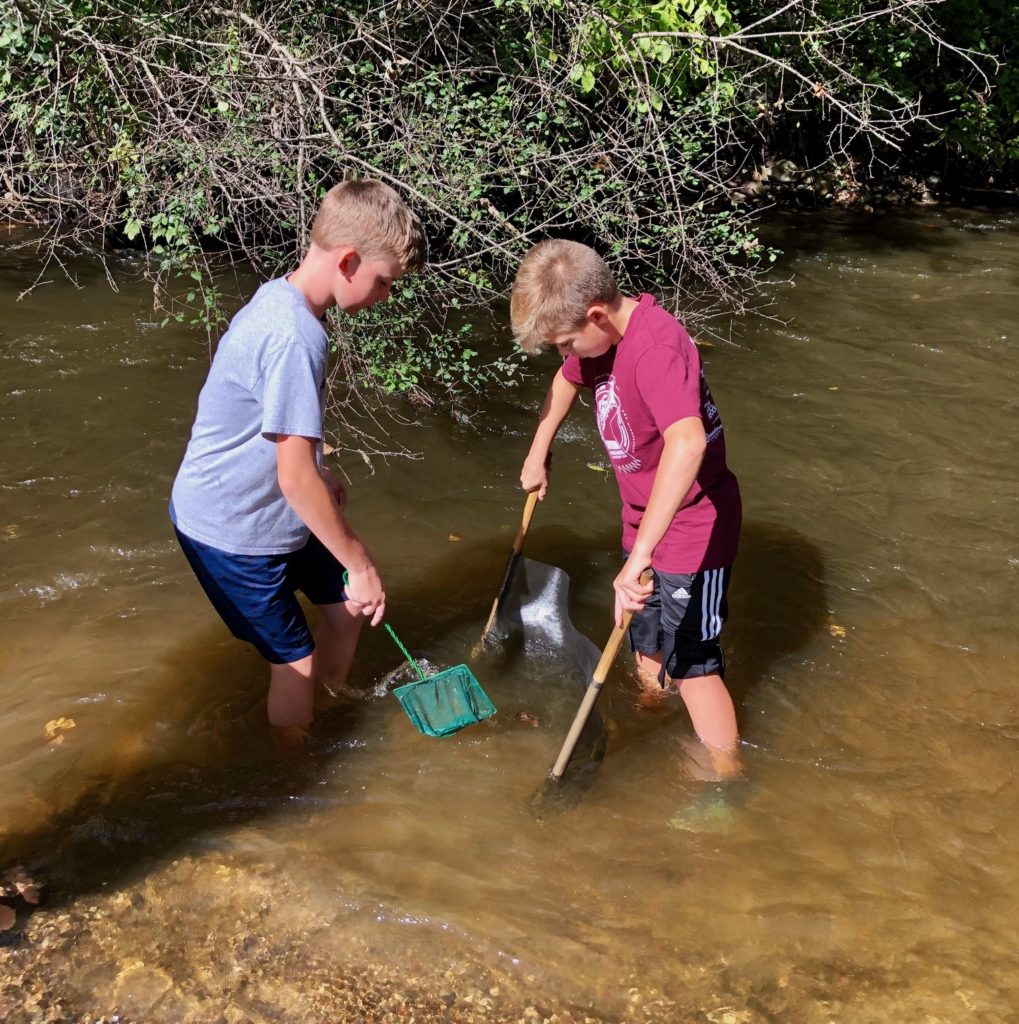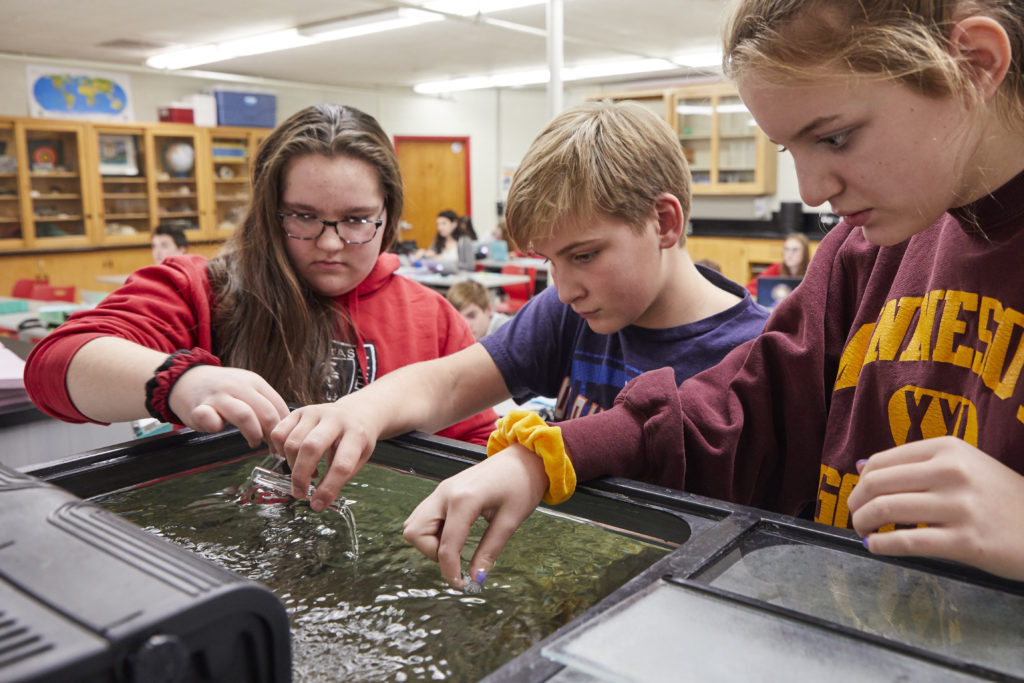Our Environmental Education Program
In our increasingly urban, developed, and technological society, many students don’t have regular opportunities to connect with the outdoor world. “If we want children to flourish, we need to give them time to connect with nature. They need to love the Earth before we ask them to save it.”
Trout in the Classroom does exactly this by providing consistent opportunities for students to connect with their natural environment through field days, classroom activities, and caring for their own trout from eggs to fingerlings from December to May. Their school year culminates with a field trip to release the trout into the wild that they have raised and learned so much from throughout the year.
Students engaging with TIC are immersed within a place-based environmental education program that allows them to establish empathy and a well-rounded understanding of aquatic ecosystems. This includes the essential role that trout and other organisms play in our watersheds. They also learn about their roles as environmental stewards and how their choices affect the natural world.
Our Minnesota Trout in the Classroom programming is made possible through funding provided by the Minnesota Environment and Natural Resources Trust Fund as recommended by the Legislative-Citizen Commission on Minnesota Resources, as well as the Jeffers Foundation.




Seasons of TIC
In the fall, students conduct aquatic macroinvertebrate investigations as a component of a water quality study on a local creek, stream, river, or lake. Getting up close and personal with aquatic insects they catch from a stream or river, students learn about and identify them in order to determine the health of that body of water, and have a lot of fun in the process. Students of all ages love this field day lesson and often find themselves holding something they never knew existed.
There is also lot happening in TIC during the winter. Students, also known as “trout technicians” test water chemistry each day in addition to feeding their fish, vacuuming the tank, removing dead fish, cleaning the filter, and performing weekly water changes. Through these routines, students not only become invested in the well-being of their fish, but also learn about the nitrogen cycle and trout biology. In addition, MNTU’s education team and volunteers engage students in a variety of fun and hands-on lessons about aquatic insects, fly tying, watersheds, fish identification and adaptations, winter ecology, and ice fishing.
Each spring, the excitement is palpable both for both students and teachers as they arrive at their trout release sites, carrying a heavy and cumbersome cooler of trout fingerlings to the shoreline to prepare for their release. With well wishes for success and a wave, students pour their trout fingerlings into the water and watch them swim away. Having raised them from eggs, these trout provide students with a physical and direct connection not only to the waters in which they’re being released, but also the natural environment as a whole.

Word has gotten out about Trout in the Classroom, and a growing list of educators are hoping for the opportunity to participate in this fantastic program. Given today’s delicate balance between humans and our interactions with the natural environment, these education programs like TIC become even more important with each passing season. We are always looking for partners to help support and grow this impactful education program. Contact Amber Taylor at education@mntu.org for more information and visit our Instagram and Facebook pages to keep up with what’s happening with Trout in the Classroom and our Fishing Skills programs.

“TIC is a phenomenal program. It is rare to have the privilege of using hands-on learning to experience the life cycle of fish in real time, and over the seasons.”
“The real-life experience for students is second to none! For students to be able to complete a fall macroinvertebrate study in the same local trout stream they will release the trout they hatched and raised in the classroom is an awesome educational experience.”
Interested in Volunteering with TIC?
Check out the descriptions below to find a position that works for you.
Watershed Steward
Watershed stewards foster student appreciation for local watersheds and promote conservation. Assist with the activities on our field days. These activities include water quality testing, macro invertebrate sampling, and other lessons. Field days are held throughout the fall and spring. You will receive training in: macro invertebrate ID, water quality testing and other field day activities. Must be 18+.
Fishing Skills Coach
Fishing skills coaches pass on their passion of fishing and love of nature to the next generation of anglers. Help students tie their first flies, cast fly and spinning rods, tie knots, bait hooks, and land their first fish. Fly tying events are held in schools throughout the winter and casting and fishing programs are held in spring and summer. You will be trained in: fly tying and fly and spin fishing basics. Must be 16+.
Classroom Liaison
Classroom liaisons maintain a strong relationship with one or two teachers and their students. Assist with delivery of equipment and supplies, troubleshoot aquaria issues with teacher and TIC staff, and assist with in-school lessons. Plan to visit your classes at least once a month. You will receive training in: aquarium maintenance, raising trout, and classroom activities. Must be 18+.
Catch Up on Education News

